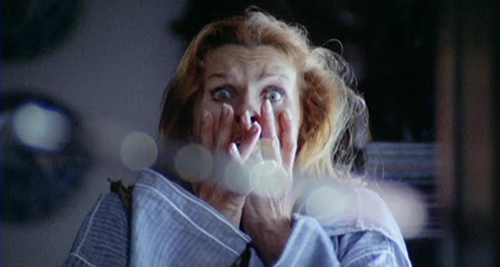
 Puzzle’s title refers to the amnesia of Peter (Luc Merenda, Shoot First… Die Later), a man who recalls nothing about himself eight months after a car accident. Shortly after the film begins, he’s fortunate enough to learn that he:
Puzzle’s title refers to the amnesia of Peter (Luc Merenda, Shoot First… Die Later), a man who recalls nothing about himself eight months after a car accident. Shortly after the film begins, he’s fortunate enough to learn that he:
• has a wife named Sara (the splendiferous Senta Berger, Killing Cars)
• was a con artist who pissed off a lot of people
• is in possession of something for which said people are willing to kill
But whom and what? The movie’s very name clues viewers in that the best way to experience Puzzle is to go in knowing as little as possible, so you can investigate as much as Peter. To encourage that, I’ll reveal no further plot. Besides, you already know Chekov’s principle that if a chainsaw is left carelessly on the kitchen table in Act 1, it’s going to come in handy in Act 3, right?
Hitchcockian on paper, Puzzle comes well-constructed by co-writer Ernesto Gastaldi, who’s penned more great gialli than you have fingers, including Torso, All the Colors of the Dark, The Strange Vice of Mrs. Wardh, et al. If the screenplay can be faulted for anything, it’s that having so few characters makes the perp obvious sooner than director Duccio Tessari (The Bloodstained Butterfly) may have liked. Still, the film’s best sequence arrives after the reveal, with suspense simmering toward a strong boil as three separate elements in a room rather ingeniously threaten to place Sara in mortal danger. Tessari pays it off with intense slow-motion shots that make up for questionable close-ups of mouths (complete with crumbs on lips) early on.
Co-stars include Anita Strindberg (Lucio Fulci’s A Lizard in a Woman’s Skin); Bruno Corazzari (Fulci’s The Psychic), whose allergy-ridden character dispenses Kleenex as he does story points; and child Duilio Cruciani (Fulci’s Don’t Torture a Duckling). As usual with the giallo, the setting is so magnificent, Puzzle appears to have been made with the assistance of Italy’s tourism council. —Rod Lott

